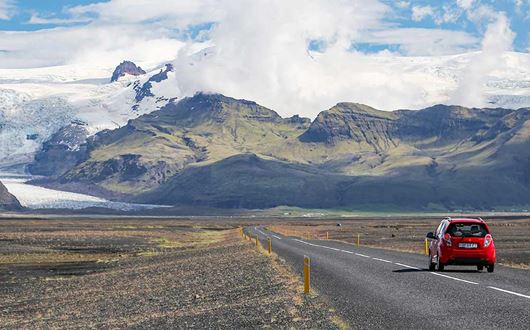Planning a trip to Iceland can be thrilling and daunting, especially when managing your finances. Understanding the Iceland trip cost can help you prepare better and enjoy your adventure without financial stress. Traveling to this Nordic island is a once-in-a-lifetime experience, but breaking down typical expenses will help you understand how to budget effectively, from transportation to dining.
Transportation Costs
Your Iceland trip cost can start on a budget-friendly note, thanks to frequent deals from budget airlines such as Icelandair and WOW Air. These airlines often provide flights from central North America and Europe hubs for as low as $99 one-way during sale periods. However, once you land, transportation costs can quickly add up. Renting a car is a trendy way to explore the island, allowing the freedom to visit remote locations and marvel at Iceland’s natural beauty. Renting a vehicle ranges from about $50 per day for a small car to $200 per day for a more robust 4×4 vehicle essential for traversing Iceland’s rugged terrain. Additionally, gasoline prices in Iceland are among the highest in Europe, averaging around $7 to $8 per gallon. To manage these expenses, consider securing deals in advance through local rental agencies and budgeting for gas and additional car rental insurance.
Accommodation Expenses
The accommodation cost in Iceland spans a broad range to suit different budgets. Hostel dormitory beds are an option for budget-conscious travelers, costing around $30 per night. Hostels in Iceland are clean, safe, and often located in central areas, providing convenient access to city attractions. Mid-range hotels typically charge between $100 to $200 per night, offering more comfort and amenities, such as Wi-Fi, breakfast, and sometimes even scenic views. Upscale hotels and resorts often cost more than $500 per night for luxury guests, including expensive amenities like guided tours, spas, and fine dining. Guesthouses and Airbnb options provide unique experiences like staying on a farm or in a traditional Icelandic cottage. These can be cost-effective choices and offer a homey feel. Booking your stay well in advance, particularly during off-peak seasons in late fall and early spring, can yield significant savings and ensure availability.
Dining and Food
While Icelandic cuisine is widely acclaimed for its freshness and unique flavors, dining out can be expensive. Expect to pay about $20 for a meal at an inexpensive restaurant, which might include local dishes like fish stew or lamb soup. A three-course meal for two people at a mid-range eatery can cost around $100, featuring Icelandic specialties such as Arctic char, reindeer, and puffin. If you’re on a budget, consider grocery shopping and preparing some of your meals. Local supermarkets like Bonus and Kronan offer various food products at a fraction of the cost of dining out. This lets you try local favorites like skyr (a thick yogurt) and harðfiskur (dried fish) while saving money. Additionally, many accommodations offer breakfast included, which can help reduce meal costs by fueling up before a day of exploring. For travelers looking to splurge, high-end restaurants in Reykjavik and other cities provide gourmet takes on traditional Icelandic cuisine in atmospheric settings for memorable dining experiences.
Activities and Tours
Experiencing Iceland’s majestic landscapes often means participating in various tours and activities with significantly varying prices. Glacier hiking, whale watching, and ice cave tours are among the more sought-after activities, costing anywhere from $50 to $200 or more per person. For example, whale-watching trips from Reykjavik may cost as little as $85 per person and provide breathtaking views of dolphins, orcas, and humpback whales in their native environment. The mineral-rich waters and surrounding lava fields of the $75-per-visit Blue Lagoon geothermal spa provide an abundant and soothing experience. Self-guided tours and independent exploration of natural sites are also budget-friendly. Don’t miss out on accessible attractions, like national parks and hot springs, which offer spectacular experiences at no cost. While some guided tours may be expensive, they often include transportation and expert guides who provide invaluable insights into the locations visited, making them worth the investment for a richer experience.
Tips to Save Money
- Travel during the off-season (late fall and early spring) to benefit from lower flight and accommodation prices. Fewer tourists during these times also mean a more authentic experience without the crowds and less competition for attractions.
- Take advantage of local transportation passes for cost-effective commuting. For instance, the Reykjavik City Card provides unlimited travel on city buses, access to geothermal pools, and discounts on multiple attractions.
- Invest in a grocery store loyalty card to get discounts on food purchases. These cards offer significant savings on essential items, which can be especially handy for long-term travelers or those planning to cook meals.
- To save on meals, opt for accommodations that include complimentary breakfast. Many hostels, guesthouses, and hotels provide hearty breakfasts that can keep you going for most of the day, allowing you to skip or have a lighter lunch.
Currency and Payment
Iceland uses the Icelandic króna (ISK). Due to their widespread acceptance, credit cards are practical for most purchases, including those made at restaurants, taxis, and specific vending machines. However, carrying some cash is advisable, especially when visiting small businesses or remote areas that might only accept cash. Urban areas have many ATMs, with central banks and airports providing currency exchange facilities. Being prepared with a small amount of money can prevent inconveniences and ensure you’re ready for any situation, especially in rural areas where card systems may be unreliable.
Overall Budgeting
On average, a 7-day trip to Iceland for one person can cost around $2,500, covering flights, accommodation, food, and activities. This figure can vary based on travel preferences and the season. Budget travelers can manage costs by staying in hostels, preparing meals, and opting for free attractions. Conversely, travelers seeking a more luxurious experience or visiting during peak seasons should plan for higher expenses. You can consult comprehensive resources like this budget guide for a more detailed budgeting breakdown. Proper planning and research can help you tailor your trip to fit within your financial means while maximizing the experience. Factoring in all these elements will give you a realistic view of how much you should save and spend for a fulfilling Icelandic adventure.
Final Thoughts
Though an Icelandic vacation may be more expensive than other destinations, the unique experiences and awe-inspiring landscapes make it a worthwhile investment. The country’s stunning natural beauty, from cascading waterfalls to expansive glaciers, offers unforgettable memories. It is possible to take advantage of Iceland’s natural beauty without going over budget if you prepare and carefully budget. Check out this link for more travel advice that can help you save cash. By carefully organizing your journey, you can guarantee a rewarding and reasonably priced Icelandic experience you’ll cherish for years.
Keep an eye for more news & updates on TimesAnalysis.Com!



